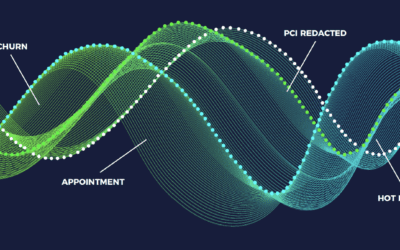TRANSFORMING CALL CENTERS
In 2015, there were more than 2.2 million call center workers employed in the US, with several times that working overseas.
These centers have come a long way since their creation in the 70s, and they’ve cemented themselves as a mainstay in companies all over the world for sales and customer service.
Where did the concept of a call center come from? How has the industry evolved over the years? And what does the future of call centers look like? Below is a brief overview of how call centers came to be and how new deep-learning speech recognition is changing the face of the industry.
IT ALL STARTED WITH TELEMARKETING
The earliest traces of telephone business services are found in telemarketing. Mary and Gary West, owners of what is now known as West Corp., are considered pivotal players in the inception of the industry. In 1973, Mary established telemarketing service agency Mardex, and in 1978 she founded WATS marketing of America. These companies laid the groundwork for the success of several other marketing agencies to follow in the coming years.
Telemarketing companies more or less saw success in the following decades, but not without some hefty transformations in how people thought about the telemarketing industry, including the name telemarketing itself.
THE RISE OF THE CALL CENTER
By the 1980s, the word telemarketing had developed a negative connotation, often associated with being interrupted by the telephone at dinnertime. As a result, many companies quickly shifted their branding from telemarketing to call centers. While the call center terminology was coined in the 1980s, the name didn’t cement itself universally until the 1990s.
The early days of call centers marked a drastic change in the services offered by these companies. Instead of focusing on unsolicited, blind sales and marketing attempts, call center organizations began to look to providing other services for companies. These services included customer comments and concerns, billing inquiries, etc.
The purpose of these services was originally intended to help streamline processes and increase proficiency within a given organization. While this certainly remains a common goal with call center services today, a new duty quickly arose to be answered by call centers: the provisioning of quality customer experience.
Being able to provide a unique and quality experience is the hallmark of any successful business model today, and call centers have proven to be pivotal in properly executing this goal. Call centers are at the forefront of customer interaction, where everything from marketing to sales and customer service can take place. The culmination of streamlining business processes and providing unique customer experiences has placed a heavy burden on call centers to strategize and build business models that cater to both.
TECHNOLOGY AND THE CALL CENTER
Rich Tehrani, CEO of TMC, recalls the “state-of-the-art technology in the early days was a Rolodex or index cards with customer names on them.” The call center industry has certainly seen some technological advancements since then.
Technology such as the predictive dialer—which allowed a computer to make rapid-fire phone calls—and automatic call distributors (ACD) drastically increased the productivity of early call centers. But again, as the main function of call centers shifted to customer experience, newer predictive technology began to surface.
Early PC software like Salemaker and TeleMagic enabled telemarketers and other salespeople to track their customers and prospects. These solutions were precursors of what is now known as customer relationship management or sales force automation software. The advent of CRM technology initially gave call center agents insight into what actions and decisions customers were making. This eventually led to even greater solutions such as big data analytics and deep-learning speech recognition to grant further intelligence into customer’s emotions, thoughts, and desires.
AUTOMATION AND THE FUTURE OF CALL CENTERS
As mentioned above, the rise of big data and deep learning technologies have given call centers incredible power to fully understand the needs of the customer. More and more, companies are automating call center functions to make quick work of analyzing intelligence gathered through conversations with customers.
At the forefront of this revolution is automatic speech recognition (ASR). This automated technology listens to phone conversations and provides an interactive transcript which allows the user to fully understand all aspects of a customer interaction. From this information, predictive insights can be developed which will help build future customer strategies. Being able to automatically and accurately analyze customer interactions in real time is seemingly the ultimate tool in providing the best possible customer service experience. In the not-so-distant future, speech recognition technology will be commonplace in all call centers.
Are you ready to take your call center analytics and insights to the next level? Check out VoiceBase today and discover what automatic speech recognition can do for you.


